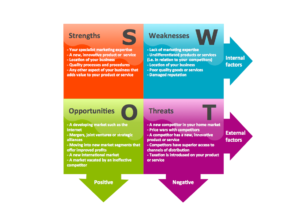What Is SEO / Search Engine Optimization?
SEO stands for “search engine optimization.” In simple terms, it means the process of improving your site to increase its visibility when people search for products or services related to your business in Google, Bing, and other search engines. The better visibility your pages have in search results, the more likely you are to garner attention and attract prospective and existing customers to your business.
Learn more about SEO and its uses with Pritish Kumar Halder.

SEO LOGO
How does SEO work?
While there is a way to maximize results, it is almost impossible to fully manipulate search algorithms. Business often look for the shortest path towards ideal results with the least amount of effort, but SEO requires a lot of action and time. There is no SEO strategy where something cannot be changed today with the expectation of clear results tomorrow. SEO is a long-term project, with daily action and constant activity
What algorithms evaluate for search engine optimization?
There are hundreds of factors that go into what content from the index gets displayed into a SERP. However, they bubble up into five key factors that help determine which results are returned for a search query.
Meaning of the query
To return relevant results, the algorithm needs to first establish what information the user is searching for. This is known as intent. To understand intent, the algorithm is looking to understand language. Interpreting spelling mistakes, synonyms and that some words mean different things in different contexts all play into the algorithm understanding searcher intent
Relevance of webpages
The algorithm analyses webpage content to assess whether the sites contain information relevant to what a user is looking for. This comes after intent is established. A basic signal for relevance would be if the webpage includes the keywords used in the search.
Quality of the content.
Search engines’ aim is to prioritize the most reliable sources available. The intelligence built into the algorithms can identify which pages demonstrate expertise, authoritativeness and trustworthiness in relation to the intent.
Usability of webpages
Web design and accessibility play a big part in search rankings. The algorithm looks for how the site appears in different browsers, if it’s designed for different device types — such as desktops, tablets and phones — and if the page loading times work well for users with slower internet connections.
Context and settings
Search engines and their algorithms use information from past search history and search settings to help determine which results are most useful to a user at that moment. Country and location can be used to deliver content relevant to the area from which someone is searching
SEO benefits
Search engine optimization is an essential marketing activity to make a website or business visible on the web. But it also provides several other benefits to companies.

INCREASE IN SALES AND LEADS
Builds trust and credibility
Sites that rank high on SERPs are considered to be of the highest quality and most trustworthy. Results shown on the first page are the most relevant, resulting in more credibility for the business or website.
Provides a competitive advantage
When good SEO is deployed consistently, those that do it more and better will outrank the competition. Many businesses feel they cannot afford to not be on the first page of a search result
Reaches more people
SEO helps attract any user with intent at any time, regardless of phase of the customer journey that user is in. It relies on keywords and phrases to attract audiences to specific products and services. Businesses can create a list of keywords for which they would like to rank, then build content around those keywords.
Supports content marketing
By having a list of keywords to rank for and building content around those keywords, users are more likely to find the information they seek. Content and SEO work in harmony with each other. A site will rank better by creating useful, high-quality content that is optimized for those keywords.
SEO techniques
There are three main components — or pillars — to SEO that go into building effective SEO strategies:

SEARCH ENGINE OPTIMIZARTION PAGES
Technical optimization.
This is the process of completing activities when building or maintaining a website to improve SEO. It often has nothing to do with the content that is on the page itself. Some ways to manipulate technical optimization include having an XML sitemap, structuring content in a way that is intuitive to user experience and improving site performance — such as page load times, correct image sizing and hosting environment.
On-page optimization
. This is the process for ensuring the content on a website is relevant to the users. This content includes the right keywords or phrases in the headings and body of the copy; and ensuring that each page includes meta descriptions, internal links within the site and external links to other reputable sites, and a good URL with the focus keyword. Website administrators use content management systems (CMS) to maintain on-page content.
Off-page optimization.
This technique is deployed to enhance a site’s rankings through activities outside of the website. This type of activity is driven largely by backlinks. Businesses can generate these from partnerships, social media marketing and guest blogging on other sites.
These three components help marketers focus on the activities and techniques to build strong rankings for their websites.
Reference
https://searchengineland.com/guide/what-is-seo
https://www.techtarget.com/whatis/definition/search-engine-optimization-SEO












very informative articles or reviews at this time.
Great information shared.. really enjoyed reading this post thank you author for sharing this post .. appreciated
naturally like your web site however you need to take a look at the spelling on several of your posts. A number of them are rife with spelling problems and I find it very bothersome to tell the truth on the other hand I will surely come again again.
This is really interesting, You’re a very skilled blogger. I’ve joined your feed and look forward to seeking more of your magnificent post. Also, I’ve shared your site in my social networks!
This was beautiful Admin. Thank you for your reflections.
Awesome! Its genuinely remarkable post, I have got much clear idea regarding from this post
I am truly thankful to the owner of this web site who has shared this fantastic piece of writing at at this place.
I agree with your point of view, your article has given me a lot of help and benefited me a lot. Thanks. Hope you continue to write such excellent articles.
I like the efforts you have put in this, regards for all the great content.
Awesome! Its genuinely remarkable post, I have got much clear idea regarding from this post
Hi there to all, for the reason that I am genuinely keen of reading this website’s post to be updated on a regular basis. It carries pleasant stuff.
Good post! We will be linking to this particularly great post on our site. Keep up the great writing
This was beautiful Admin. Thank you for your reflections.
very informative articles or reviews at this time.
I do not even understand how I ended up here, but I assumed this publish used to be great
Awesome! Its genuinely remarkable post, I have got much clear idea regarding from this post
Nice post. I learn something totally new and challenging on websites
I truly appreciate your technique of writing a blog. I added it to my bookmark site list and will
You’re so awesome! I don’t believe I have read a single thing like that before. So great to find someone with some original thoughts on this topic. Really.. thank you for starting this up. This website is something that is needed on the internet, someone with a little originality!
I do not even understand how I ended up here, but I assumed this publish used to be great
very informative articles or reviews at this time.
Good post! We will be linking to this particularly great post on our site. Keep up the great writing
For the reason that the admin of this site is working, no uncertainty very quickly it will be renowned, due to its quality contents.
Awesome! Its genuinely remarkable post, I have got much clear idea regarding from this post
I really like reading through a post that can make men and women think. Also, thank you for allowing me to comment!
Hi there to all, for the reason that I am genuinely keen of reading this website’s post to be updated on a regular basis. It carries pleasant stuff.
For the reason that the admin of this site is working, no uncertainty very quickly it will be renowned, due to its quality contents.
For the reason that the admin of this site is working, no uncertainty very quickly it will be renowned, due to its quality contents.
I do not even understand how I ended up here, but I assumed this publish used to be great
Nice post. I learn something totally new and challenging on websites